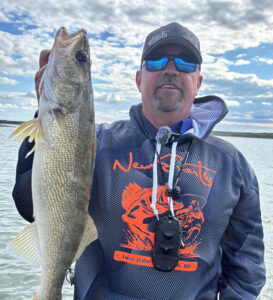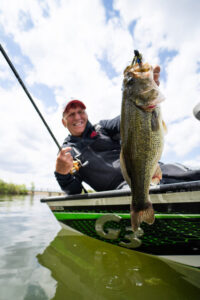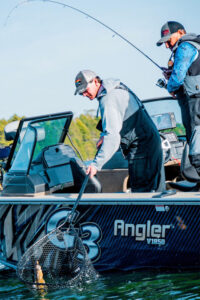By Mike Frisch
Each year in November I try to look back at the just completed fishing season to try to see what I learned and what changes I saw that impacted fishing and fishing success. This season, a couple of things I’ve written about previously continue to be most noteworthy. These two topics aren’t new to anglers, but they continue to be in the forefront of topics for many who fish.
Clear water continues to dominate
As I have written about previously, the biggest change to our fisheries and fishing in recent memory continues to be the unwanted introduction and continuing spread of zebra mussels and their resulting effects. These invasive species are now present in most lakes I fish. “Zeebs” filter lake water usually causing clearing water conditions and increasing the presence of weeds.
Clear water and more weeds can make fishing more difficult, particularly when walleyes are targeted as these conditions often drive walleyes into thick weeds. This makes the fish harder to access and harder to catch. Anglers fishing walleyes in some, if not many, waters find themselves fishing more and more around weeds and using presentations that effectively catch those fish from this cover.
Some clear water walleyes call weeds home, while other walleyes in clear water will often head for extreme depths. Some lakes now have walleyes in late summer that school in 40 to 50 feet. Those depths are fairly common to walleyes during fall, but it seems that we are seeing those fish deeper earlier in the year than before zebra mussels were present.
These deep-water walleyes can be seen on sonar and caught often by anglers using vertical lures and glide baits. A problem, however, is that fish pulled from extreme depths often die from barotrauma, injuries that a fish may receive from rapid changes in atmospheric pressure. This makes releasing small, juvenile fish or large trophy-sized fish problematic.
How do anglers overcome zeebs, clearing waters, and the effects just mentioned? First, weed walleyes are often best targeted fishing the lowlight hours of early morning and evening. Lowlight walleyes in weeds are often “edge-related” making them more catchable than they become later in the day when they bury in weeds. And, anglers good at fishing “weedy” presentations like pitching jigs and plastics to edges and pockets of weeds or pulling spinners and nightcrawlers over the weed tops are more successful too.
When deep fish are encountered, the best solution may be to only catch enough for your next meal from that deep school and then look for shallower fish if you want to catch more.
Forward facing sonar finds and helps catch fish! Forward facing sonar is technology that allows anglers to “see” ahead and to the sides of the fishing boat in real time and is being used more and more by anglers. One of my boats this year was rigged with forward facing sonar in conjunction with a Turret motorized transducer mount with foot control that allows the sonar transducer to be manipulated independent of the bow trolling motor.
With this fishing method, partners and I could move down a drop off weed edge or other form of cover scanning ahead and side to side looking for fish with the transducer that we could cast to while using the trolling motor to hug the edge with the boat. Or, with the trolling motor in anchor mode holding the boat in place, we could scan around the boat looking for fish to cast too as well. In either case, this fishing style is very productive and will continue to gain in popularity amongst the angling crowd.
* * *
As always, consider including a youngster in your next “angling crowd” and other outdoor adventures!
Mike Frisch hosts the popular Fishing the Midwest TV series on the Sportsman Channel and several other networks as well. Visit www.fishingthemidwest.com to see all things Fishing the Midwest.





